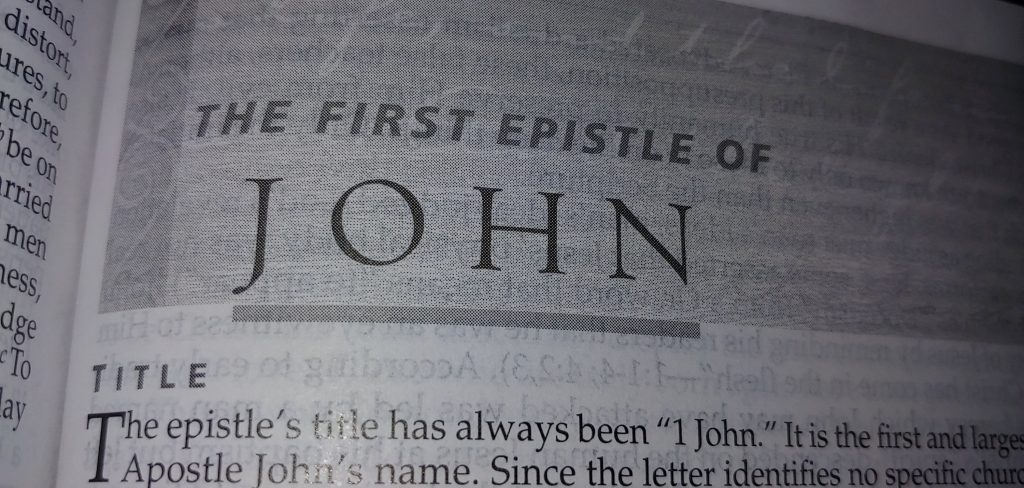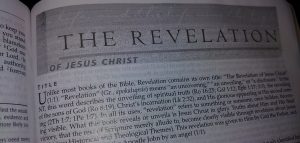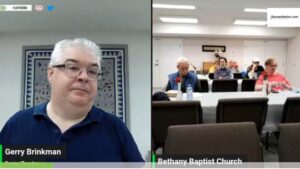
Initially when I was preparing for this overview, I thought it was going to be just like every other letter we have looked at, but I was wrong as it turned out. The letters of John do not have the classic marks that all other letters in the New Testament have. The very first thing of note is that John never identifies himself as the author of the letters, especially the first one! In the second and third epistles, there is a more cryptic identification as “the elder,” and that actually causes some of the attempts to misidentify the author as John. Having said that, the entire early church and her commentators identify John as the author of these letters.
[Overview Livestream Available Here]
The church fathers included in that endorsement of authorship include Clement, Justin Martyr, Polycarp–who was an actual disciple of John for about 20 years or so, Polycarp’s contemporary Papias, and even Irenaeus–a disciple of Polycarp–in his work Against Heresies. Tertullian was another that attributed authorship to the Apostle John, and so did a second-century list of canonical books called the Muratorian Canon. In the third century, it was Origen, Dionysius of Alexandria, Cyprian of Carthage. In the fourth century, no less than Eusebius attributed the letter to the Apostle John. While I could continue that list into subsequent centuries, I need not. It was only in the late 18th and early 19th centuries that the so-called schools of “higher criticism” in German and other places began to try to call this into question, with I might add, very little success, because it is just too well established in antiquity.
I mean think about it. Who else could have written them? The very weak argument that one “John the Elder” wrote these letters, and that this individual is different than the Apostle John and actually existed in the first place is impossible to prove from the text alone. This is of particular importance when one considers all the textual usage similarities and the personality of the writer that comes through the text. Textual analysis of this letter and the Gospel of John show common phraseology, and more than enough to argue for the same author. Incidentally, we’ll cover this again when we look at Revelation because they use the same criticism to argue for a separate author they call “John the Revelator,” but my own conclusion is that he’s the Apostle John. The very fact that ALL of the church fathers say that John wrote this letter is a very strong textual argument, and one that can be traced by direct lineage right back to John as the source.
So who was John? Apart from a guy that is humble enough to not name himself in his own writings even what the story includes him (the disciple whom Jesus loved at the Last Supper), Jesus called him and his older brother “the sons of thunder,” and that is for most people a statement of temperament. It is my own opinion that John was the younger brother based on how when he and James are mentioned together, James is always named first, and the custom of the day always rested on the oldest child first. This isn’t just my opinion, you should know. John MacArthur mentions this in his commentaries on John’s works, and I believe R. C. Sproul would have agreed with this as well. If you don’t like those guys, that’s okay too, but it isn’t a baseless interpretation of unrelated facts. John can be shown from Scripture as what I would call a bit of a zealot, though not in the sense of Simon the zealot, who was what we would call today a terrorist. In Luke 9:49, in the only mention of this in the synoptic gospels, John says an interesting line. “John answered and said, “Master, we saw someone casting out demons in Your name; and we tried to prevent him because he does not follow along with us.”” We know Jesus disallowed that request, and if that was the only verse where this kind of statement occurs, we might not think about it, but just a few verses later, James and John have a…more interesting request (v.54): “When His disciples James and John saw this, they said, “Lord, do You want us to command fire to come down from heaven and consume them?”” That drew an actual rebuke from the Lord, but that was James and John, the sons of thunder. These guys were bold enough to talk their mother into asking for them to sit on Jesus’ left and right on His throne. In fact, their mother was Salome (Mk. 15:40; cf. Mt. 27:56) that contributed financially to Jesus’ ministry on earth (Mt. 27:55-56) and in fact may have been Mary the mother of Jesus’ sister, in which case John may have been Jesus’ cousin (John 19:25).
Where did John get his attitudes? Well, he was a disciple of John the Baptist (John 1:35-40, though as you can start to expect, John did not name himself). Under John the Baptist, John would have been constantly exposed to the message, “repent for the kingdom of heaven is at hand,” and you need to demonstrate this with life actions, baptism first, and then a cessation from sin. Then he would have heard his chosen teacher speak about this One who we know to be the Lamb of God that takes away the sins of the world, and in obedience to his teacher, he left John the Baptist and followed Jesus, the Lamb of God. He would have carried who he was then with him, as we all would have. The lead character said it, but the quote comes from the movie Buckaroo Banzai, and it goes like this: “Wherever you go, there you are.” They try to make this come out of the mouths of Confucius or Buddha, but all it is saying is that you take you with you wherever you go, and it’s often why geographical cures don’t work for problems, but that’s beside the point. The point is, John was John, no matter where he went or even who he followed. As one of the sons of thunder, and based on some of the verses I quoted earlier, I think it’s safe to say John had a bit of a temper, and that he didn’t suffer fools gladly. We all know people like that. You guys do–me.
There was good news here, though. John softened toward people in some ways that counted with age. Don’t get me wrong, he was still that firebrand that had all kinds of ways of sorting out those who knew God from those who did not, and that’s largely the subject of this letter.
So if that’s John, and we’re looking at his first general letter, we need to ask the usual questions. When did he write it? What was going on in the world when he did? To whom did he write the letter? All of this information is useful in putting his remarks into a solid historical context, which as you know, helps us all with that first question we always ask: what does the text say? This is the information I found when I answered those questions for myself with research.
The date and location of John’s writings are “workable-outable.” Although there are no clear historical references as to where the letter was written, one can safely assume it was from Ephesus, based on where we know John lived. We can reason from John’s address to his “little children” audience, that he was much older than most of them, arguing for a later date, and from the lack of reference to the persecution of Domitian which began about AD 95, we know it was written before then. If the Gospel of John was written in between AD 80 and 90, and the letters were written AFTER the gospel was, as the majority of scholars believe, we can place the letter to between AD 90 and 95. Revelation was written after that, because it was AD 95 or 96 that Domitian imprisoned John of Patmos, where that particular book was written. But to whom did he write the letter and why?
Another argument for the letter being written by the Apostle John is that he exercised oversight for the churches of Asia Minor, or what we would call Western Turkey today. Which were those? Well, we can probably name at least seven of them, and I know of at least two more in that area. Were you aware that leadership in the early church only exercised that leadership within their own gathering? The overseer only has local authority. Only a living Apostle would have had oversight over more than one gathering, unless the Lord gave specific license for specific occasions or issues. His target audience included the 7 churches recorded in the book of Revelation for us: Ephesus, Smyrna, Pergamum, Thyatira, Sardis, Philadelphia, and Laodicea. In the area of Laodicea, Hierapolis had a church, as did Colossae. There were probably others as well, but those are the ones I can name. It was the believers in those cities at least that the letter was addressed to, and the letter itself seems concerned that all of the saints in those gatherings know God, walk with God in truth, and be filled with heavenly joy regardless of earthly circumstance. That’s what we will see as we look closer at the book.
That said, I broke the book down as follows:
KV:
1: The completion of our Fellowship in Christ
2: The need to love Christ and not the world
3: The need to love other believers
4:1-6: The need to be discerning at all times
4:7-21: The need to pass the test of knowing God
5: The need to overcome the world
That’s where I’m going to leave it for the overview. The issue I have is that if I go any further, I will start to preach the individual sections, and they are so spiritually rich, I think you would get mad at me of moving too quickly through this treasure of practical theology and information for disciples.
Notes: 1 | 2:1-14 | 2:15-29 | 3:1-12 | 3:13-24 | 4:1-6 | 4:7-14 | 4:15-21 | 5:1-8 | 5:9-15 | 5:16-21
Livestream: 1 | 2:1-14 | 2:15-29 | 3:1-12 | 3:13-24 | 4:1-6 | 4:7-14 | 4:15-21 | 5:1-8 | 5:9-15 | 5:16-21
[Videos with strikethrough were lost due to circumstances beyond our control.]




